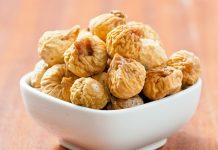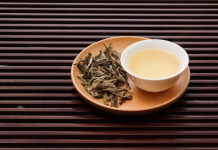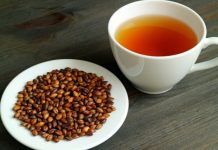
Watercress is very low in Saturated Fat and Cholesterol. It is also a good source of protein, Folate, Pantothenic Acid, and copper, and a very good source of Vitamin A, Vitamin C, Vitamin E (Alpha Tocopherol), Vitamin K, Thiamin, Riboflavin, Vitamin B6, Calcium, Magnesium, Phosphorus, Potassium and Manganese.
Can Watercress be Given to Kids?
Watercress can be avoided for the first 6 months of a baby’s life as it is best to provide breastmilk during this time. The best way to ensure that your toddler has enough iron is to include dark green vegetabes such as brocolli and watercress in the diet. Watercress can be included steamed and served with other dark leafy greens of the child’s daily diet. Watercress can also be prepared in soups thanks to its subtle musterdy and peppery taste.
In What Form Can Watercress be Given to Kids?
One of the best culinary aspects of watercress is its versatility. It can be used as a salad green (a very nutritious one!) with lettuce or fresh spinach, steamed and eaten as a vegetable, and in soups for a subtle, peppery flavor. It’s also a standard ingredient for sandwiches for both common and high tea and can easily be given to children.
Due to the versatility in which it can be eaten, inclusion in the child’s diet can be made thrrough soups, steamed greens or even eaten raw as a salad green alone or blended with other greens. It has been seen children regularly eating a bowl of 85grams of chopped watercress have:
- Higher amounts of antioxidants and reduced level of DNA damage
- Lower in calories
- Presence of Vitamin K (good for blood clotting)
- Improved immune function and vision through Vitamin A
- Greater would healing and formation of collagen with the help of Vitamin C
- High in calcium, which is essential for muscle and nerve function along with strong bones and teeth
Watercress also contains significant levels of glucosinolate compounds and many studies now suggest that these have anti-cancer effects. Eating these compounds appears to help inhibit breast, lung, colon, and prostate cancers. Flavonoid antioxidants in watercress (carotene, lutein, zeaxanthin) also support good vision, have benefits for the cardiovascular system, and help protect cells against damage from free radicals.
The presence of folate in watercress also makes them good anti depressants and help prevent insomnia and lack of concentration.
When Can We Include It In Their Diet
If you have been noticing symptoms of Attention Deficit Hyperactivity Disorder (ADHD) including insomnia, lack of concentration, mood swings, and frequent destructive outbursts, it may be a good idea to include Watercress in your child’s diet which promotes good digestion and, because it is high in vitamin K, may be useful in preventing insomnia.
The main chemical that gives watercress its peppery flavour is a compound called phenylethyl isothiocyanate, or PEITC. This potent inhibitor kills cancer cells and stimulates the detoxification of carcinogens in the body.In addition, watercress contains compounds from the sulphoraphane group that stimulate cell defences against carcinogens.
Health Benefits of Watercress for Kids
Gram for gram, it also has as much vitamin C as oranges, more calcium than milk and more iron than spinach, and it is rich in folic acid. In some people, eating fresh watercress leaves on a daily basis is even believed to prevent migraines.
Watercress contains folates which is an essential nutrient that plays a vital role in preventing birth defects and in daily health maintainance. Intake of folates may reduce the risk of depression, strokes, cancers, and chronic deseases.
A nutrient-rich perennial plant growing naturally around slow moving water sources, watercress has been known for centuries as an exceptionally nutritious herb for both eating and healing. Used in sandwiches, salads, and steamed as a side dish, it adds a tangy, peppery flavor as well as a plethora of minerals and vitamins – more than that of spinach, milk or oranges.
Vitamins A, C, and K, and phytonutrients like isothiocyanates and gluconasturtiin in watercress strengthen bones, limit neuronal damage, fight infection, help maintain healthy connective tissue, and prevent iron deficiency. Studies have found the compound PEITC in watercress may suppress breast cancer cell development and prevent DNA damage in cells.
Watercress and Calcium : Many researchers agree that calcium through dietary intake is necessary and perhaps most beneficial in the prevention of many diseases such as cardiovascular, diabetes, metabolic syndrome, and hypertension. Calcium through food sources such as watercress is also shown to be safe against adverse cardiac effects which is a concern for some that take high dose supplements. If supplemental calcium is added to the daily diet 500 mg daily is enough for most children to supplement their daily food intake.Though amounts up to 1000 mg daily are taken by some risks of calcium deposits and resulting health problems may occur.Overall food sources remain the best way to maintain healthy levels of calcium in the body.
Any Side Effects
Excessive intake of anything is bad even if it is a natural product. Watercress and other herbs and plants should not be taken without consent from a physician as it can cause certain side effects in some conditions. When used for a long duration, watercress is thought to cause kidney and stomach problems.
Also as it is found in places with slow moving water bodies there can be presence of certain pathogens and germs and the plants should be washed thoroughly before consumption, especially in the case of children.
Watercress is safe for most when used short term. When used in large amounts or long term, it may cause an upset stomach or kidney problems.
Watercress is is noted as unsafe for use as a medicine in children, in particular in those younger than the age of 4. Check with your doctor before using watercress if you’re pregnant or breast-feeding. It’s also not recommended that you use watercress if you have stomach or intestinal ulcers.
Precautions
People suffering from stomach ulcers, kidney problems and auto immune diseases are advised to avoid using watercress as a treatment. It is best to buy watercress from farms that are known to use clean running water. Watercress that grows in polluted or stagnant water can host several harmful parasites.
There is some argument about how much watercress can be safely consumed. Some parties insist that this herb can be used freely and no amount is enough due to its health benefits. However, others insist that too much watercress eaten over long periods of time can cause bladder problems or cystitis as it has strong diuretic properties. Due to its high iodine content, those suffering from hyperthyroidism should also avoid eating too much watercress.
Conclusion
Watercress is considered the No. 1 powerhouse vegetable due to its disease-fighting abilities. Its benefits include reducing the risk of colon cancer and fighting other cancers as well; providing useful omega-3 fats; possessing beneficial anti-inflammatory effects; lowering blood pressure; improving skin, hair and nail health; and strengthening bones and teeth.












